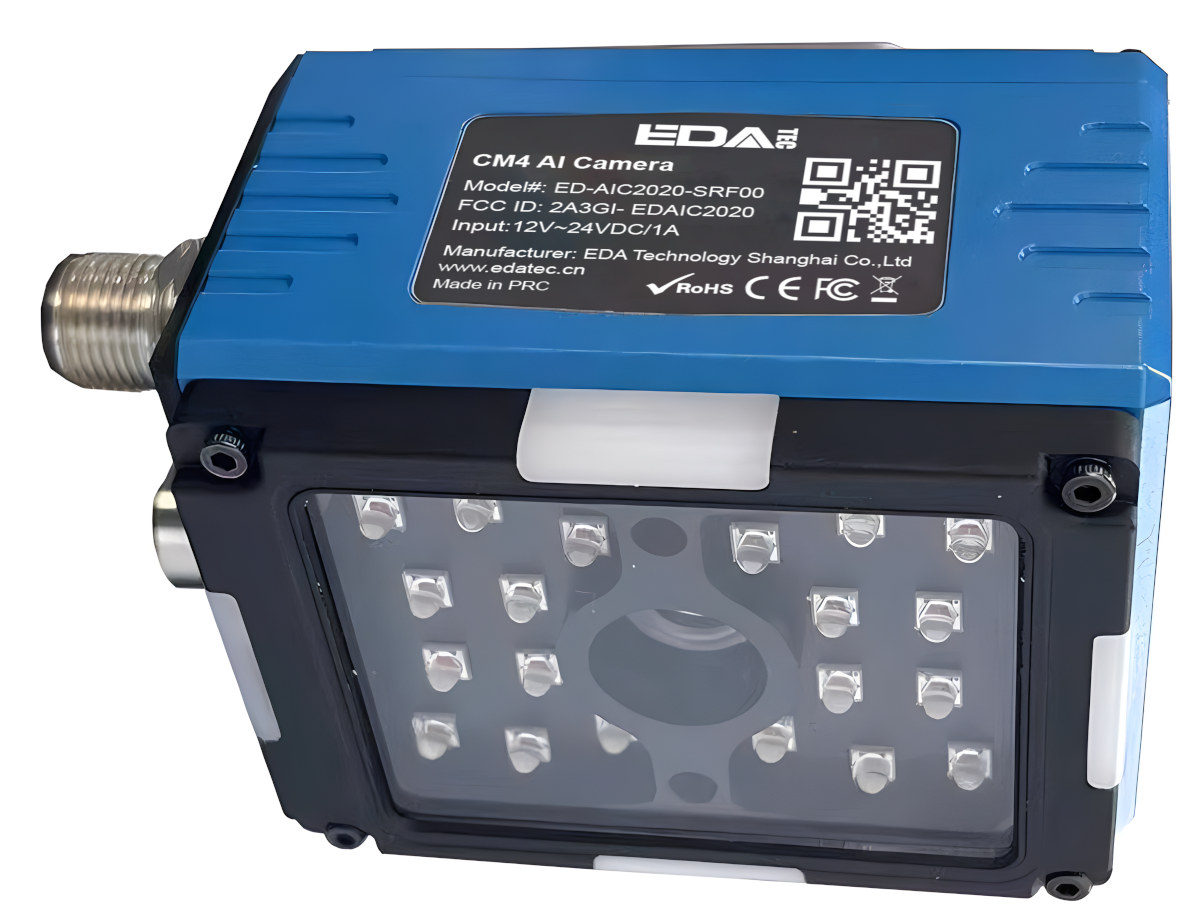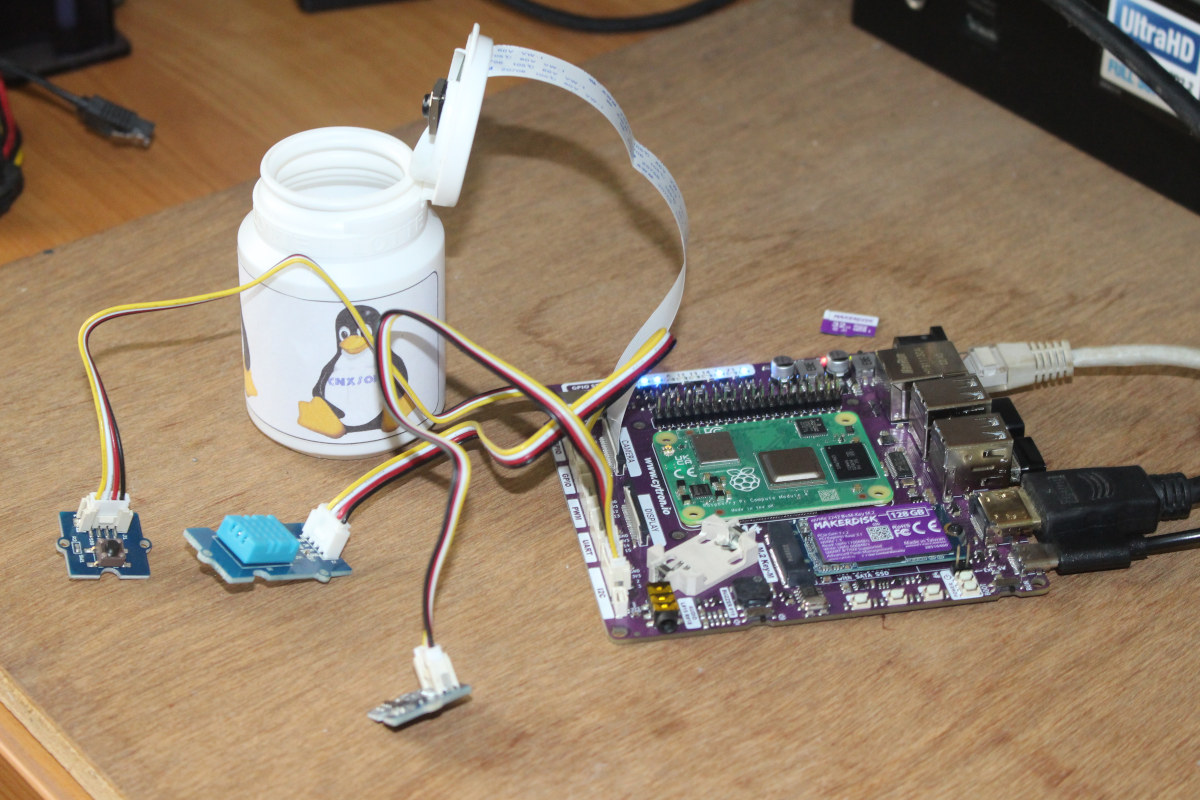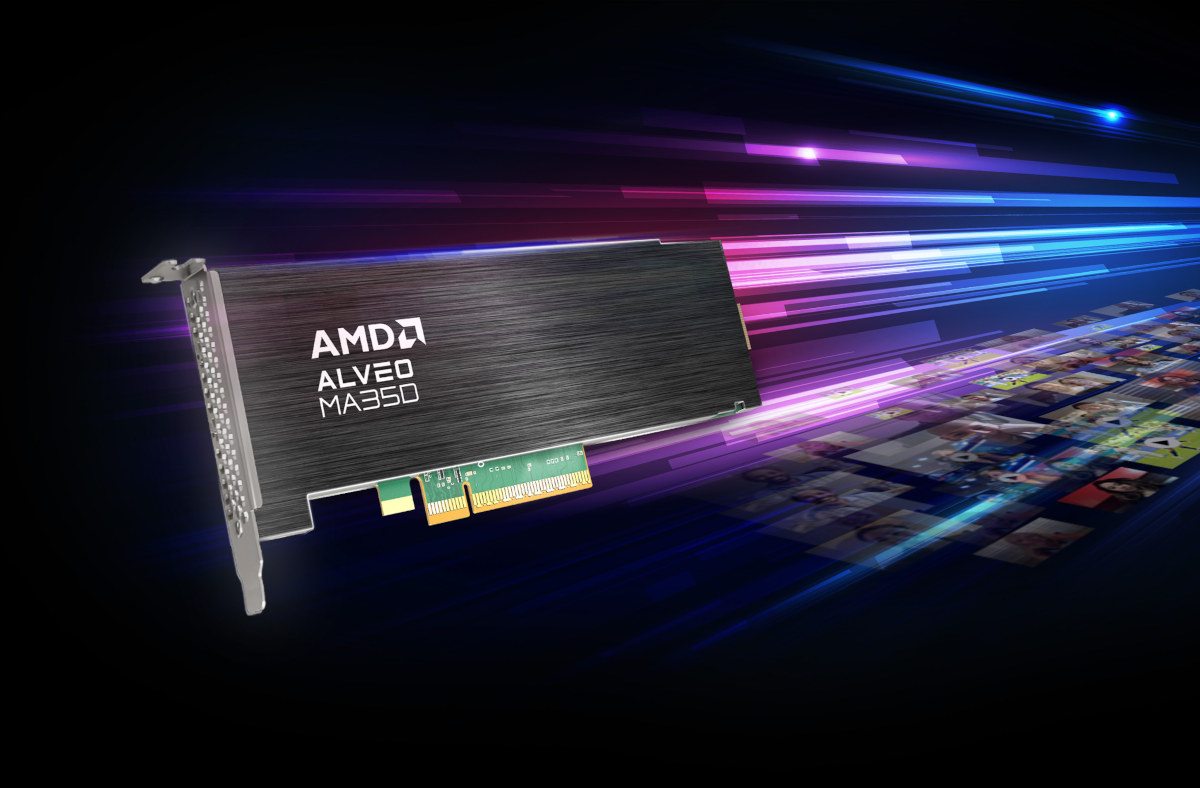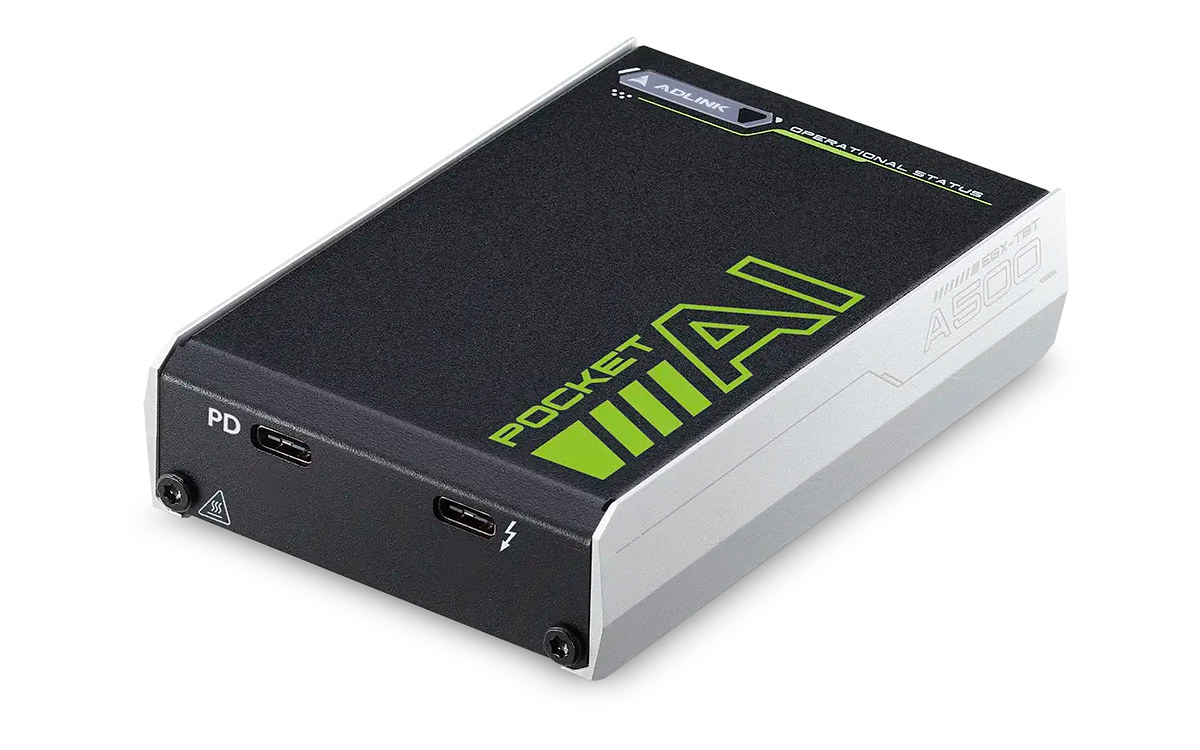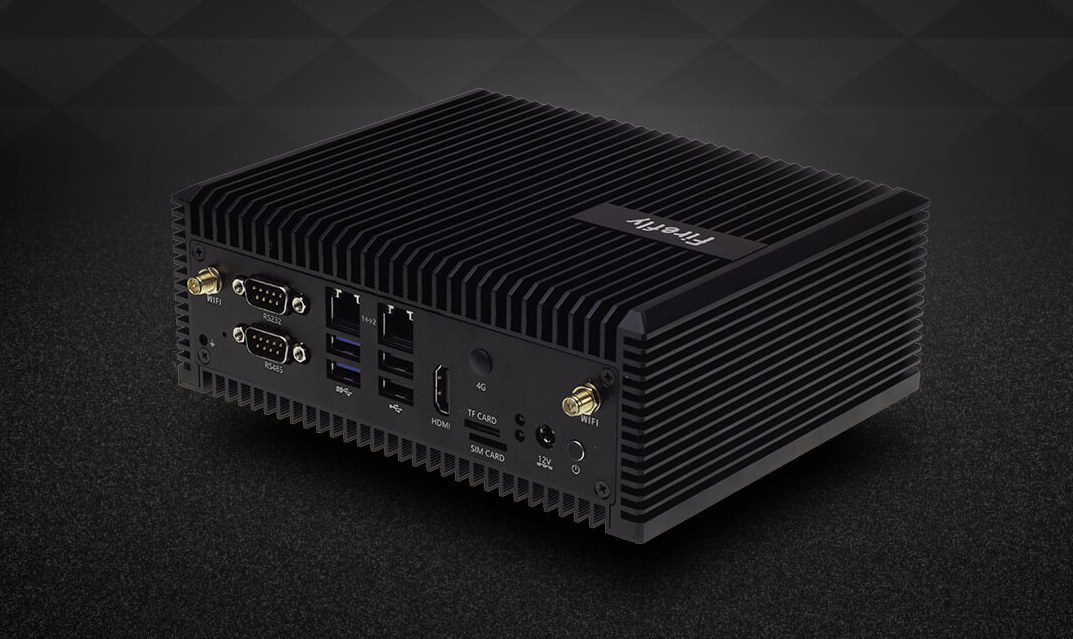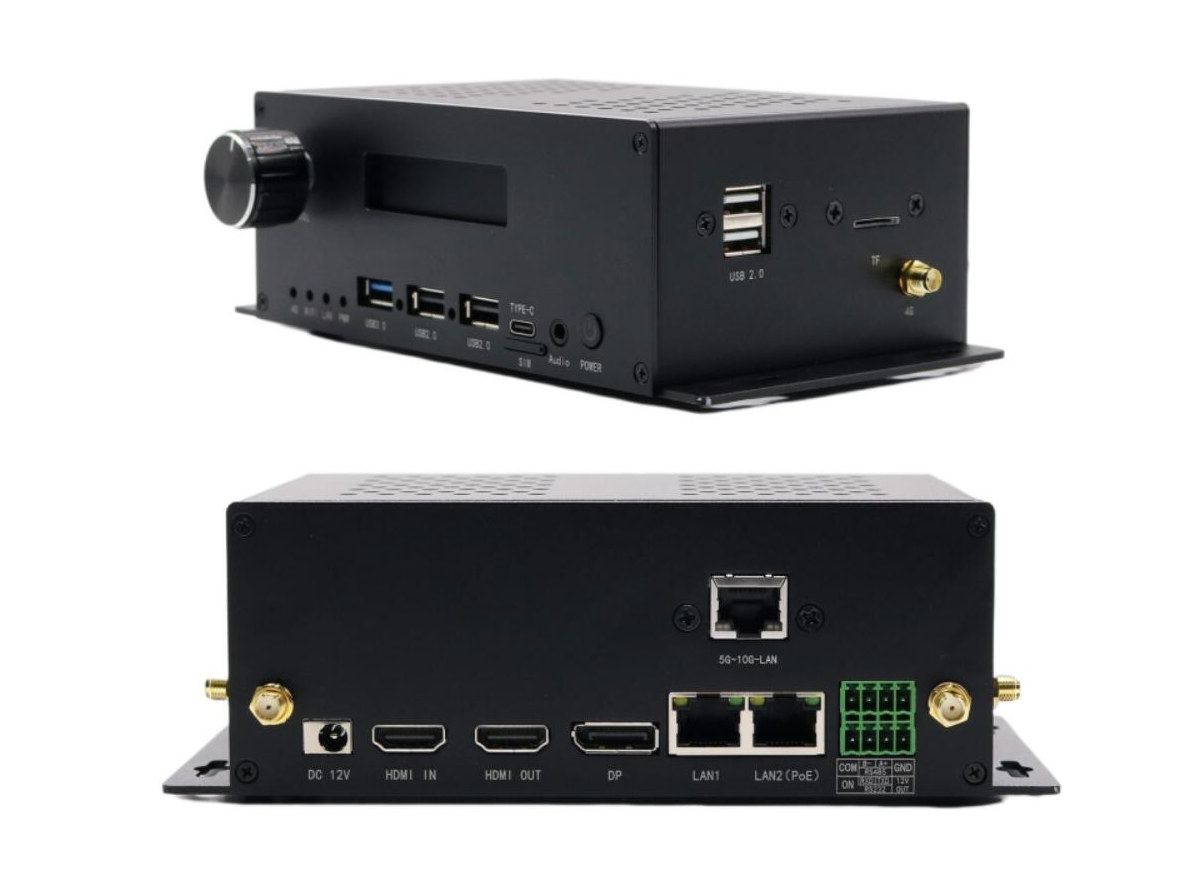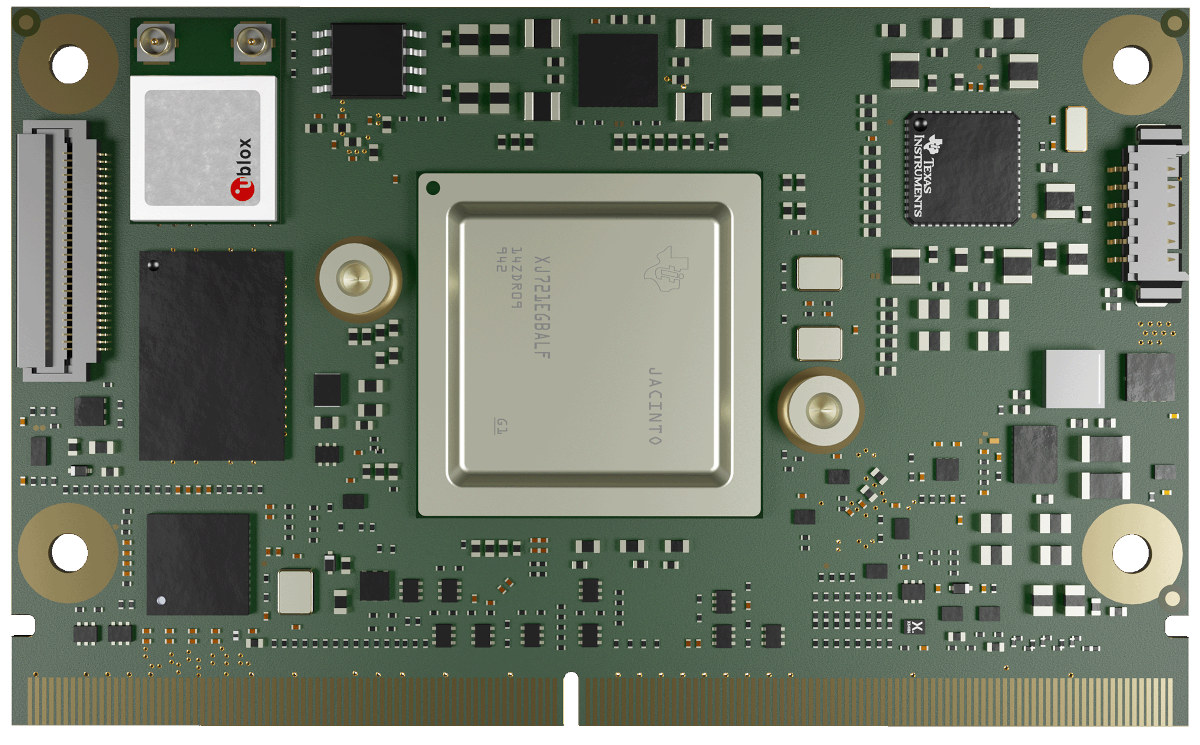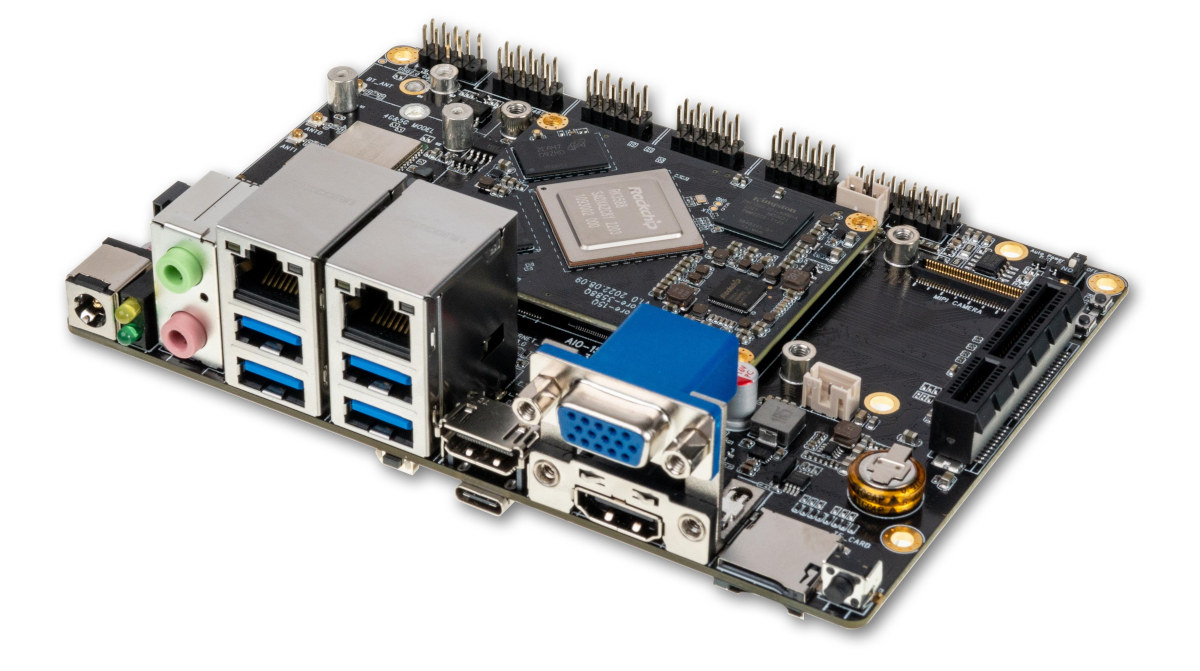EDATEC ED-AIC2020 is an IP67-rated, Raspberry Pi CM4-based industrial AI camera equipped with a fixed or liquid lens and LED illumination that leverages the Raspberry Pi Compute Module 4 to run computer vision applications using OpenCV, Python, And Qt. We’ve previously written about Raspberry Pi Compute Module-based smart cameras such as the Q-Wave Systems EagleEye camera (CM3+) working with OpenCV and LabVIEW NI Vision and the StereoPi v2 (CM4) with stereo vision. But the EDATEC ED-AIC2000 is the first ready-to-deploy Raspberry Pi CM4 AI camera we’ve covered so far. EDATEC “CM4 AI camera” (ED-AIC2020) specifications: SoM – Raspberry Pi Compute Module 4 up to 8GB RAM, up to 32GB eMMC flash Camera 2.0MP global shutter or 5.0MP rolling shutter Acquisition rate – Up to 70 FPS Aiming point – Red cross laser Built-in LED illumination (optional) Scanning field Electronic liquid lens Fixed focal length lens Networking Gigabit Ethernet M12 port Communication protocols – Ethernet/IP, PROFINET, Modbus […]
Cytron CM4 Maker Board review – Part 2: NVMe SSD, RTC, Buzzer, Grove modules, ChatGPT…
We’ve already checked out Cytron’s CM4 Maker Board kit with a Raspberry Pi CM4 system-on-module and booted the system with the included 32GB “MAKERDISK” Class 10 microSD card preloaded Raspberry Pi OS in the first part of the review. For the second part of the CM4 Maker review, I’ve mostly used the 128GB NVMe SSD provided by the company and played with other features of the board including the RTC, the buzzer, some Seeed Studio grove modules, and even got help from ChatGPT for one of the Python programs I used. Booting Cytron CM4 Maker Board with the “MAKERDISK” NVMe SSD I connected several Grove modules with GPIO and I2C interfaces, a Raspberry Pi Camera Module 3, an Ethernet cable, two RF dongles for a wireless keyboard and mouse, an HDMI cable to a monitor, and finally inserted the provided 5V/3.5A USB-C power adapter. The MAKERDISK SSD comes with Raspberry […]
AMD Alveo MA35D media accelerator transcodes up to 32 1080p60 AV1 streams in real-time
AMD Alveo MA35D media accelerator PCIe card is based on a 5nm ASIC capable of transcoding up to 32 Full HD (1080p60) AV1 streams in real-time and designed for low-latency, high-volume interactive streaming applications such as watch parties, live shopping, online auctions, and social streaming. AMD says the Alveo MA35D utilizes a purpose-built VPU to accelerate the entire video pipeline, and the ASIC can also handle up to 8x 4Kp60, or 4x 8Kp30 AV1 streams per card. H.264 and H.265 codecs are also supported, and the company claims its “next-generation AV1 transcoder engines” deliver up to a 52% reduction in bitrate at the same video quality against “an open source x264 veryfast SW model”. AMD Alveo MA350 highlights: Auxiliary CPU – 2x 64-bit quad-core RISC-V to perform control and board management tasks AI Processor – 22 TOPS per card for AI-enabled “smart streaming” for video quality optimization Memory – 16GB […]
Pocket AI – A portable NVIDIA RTX A500 eGPU for AI developers, embedded & industrial applications
We’ve previously seen it’s possible to connect an eGPU to a mini PC through a PCIe x16 to M.2 NVMe adapter or a Thunderbolt 3 port, but while it’s fine to install on your desk for gaming or develop AI applications, the eGPU being larger than most mini PCs, it’s a little too big to integrate into products, and potentially inconvenient to carry around. ADLINK Pocket AI portable eGPU changes that with an NVIDIA RTX A500 GPU housed in a 106 x 72 x 25mm box that’s about the size of a typical power bank and connects to a host through a Thunderbolt 3 connector. The company says the upcoming eGPU is mostly designed for AI developers, professional graphics users, and embedded industrial applications, but can also be for gaming. Pocket AI specifications: GPU – NVIDIA RTX 500 Architecture – NVIDIA Ampere GA107 Base clock: 435 MHz Boost clock: 1335 […]
SOPHON BM1684/BM1684X Edge AI computer delivers up to 32 TOPS, decodes up to 32 Full HD videos simultaneously
Firefly EC-A1684JD4 FD and EC-A1684XJD4 FD are nearly identical Edge AI embedded computers based on respectively SOPHON BM1684 and BM1684X Arm AI SoC delivering up to 32 TOPS of AI inference, and capable of decoding up to 32 H.265/H.264 Full HD videos simultaneously for video analytics applications. The BM1684(X) SoCs are equipped with eight Cortex-A53 cores clocked at 2.3 GHz to run Linux, and the systems come with up to 16GB RAM, 128GB flash, two Gigabit Ethernet ports to receive the video streams, one HDMI output up to 1080p30 for monitoring, as well as RS232 and RS485 DB9 connectors, and a few USB ports. Firefly EC-A1684JD4 FD and EC-A1684XJD4 FD specifications: SoC – SOPHGO SOPHON BM1684/BM1684X CPU – Octa-core Arm Cortex-A53 processor @ up to 2.3GHz TPU BM1684 64 NPU arithmetic units with each NPU containing 16 EU arithmetic units, or 1,024 EU in total Up to 17.6 TOPS (INT8), […]
Rockchip RK3588 embedded PCs support PoE, 4G LTE, 10GbE, 2.5-inch SATA HDD, and more
Mekotronics R58X-Pro and R58X-HDD Rockchip RK3588 embedded PCs are updates to the company’s earlier R58X and R58X-4G mini PCs with features such as built-in PoE module, 4G LTE module, optional 10GbE M.2 PCIe 3.0 module, and a microSD card slot. The R58X-HDD also adds a 2.5-inch SATA bay for HDD or SSD, and the R58X-Pro implements a volume knob and a front panel display. Both R58X-Pro and R58X-HDD embedded PCs still come with up to 16GB RAM, 128GB eMMC flash, support dual 8K video output through HDMI and DisplayPort outputs, feature one HDMI 2.0 video input, two GbE ports, RS485 and RS232 interfaces, a few USB ports and more. Mekotronics R58X-Pro/R58X-HDD specifications: SoC – Rockchip RK3588 octa-core processor with four Cortex-A76 cores @ 2.4 GHz, four Cortex-A55 cores @ 1.8 GHz, an Arm Mali-G610 MP4 GPU, a 6TOPS NPU, 8K 10-bit decoder, 8K encoder System Memory – 4GB, 8GB, or […]
conga-STDA4 SMARC 2.1 module features TI TDA4VM/DRA829J Jacinto 7 processor
congatec conga-STDA4 is a SMARC Computer-on-Module (CoM) based on Texas Instruments TDA4VM or DRA829J Jacinto 7 processor with two Cortex-A72 cores, six real-time Cortex-R5 cores for functional safety, accelerated vision and AI processing capabilities, and plenty of interfaces. The first Texas Instruments-powered CoM from the company is designed for industrial mobile machinery requiring near-field analytics, such as automated guided vehicles and autonomous mobile robots, construction and agricultural machinery, as well as any industrial or medical solutions requiring energy-efficient computer vision at the edge. conga-STDA4 specifications: SoC – Texas Instruments Jacinto 7 TDA4VM/DRA829J with Dual-core Arm Cortex-A72 up to 2.0 GHz 6x Arm Cortex-R5F cores @ 1.0 GHz up to 8 MB of on-chip L3 RAM 1x C7x DSP up to 80 GFLOPs 2x C66 DSPs up to 40 GFLOPs Up to 8 TOPS MMA AI accelerator PowerVR Rogue 8XE GE8430 3D GPU with support for OpenGL ES 3.1, OpenVX, OpenCL […]
Rockchip RK3588M automotive-grade AI SoC supports up to 16 camera inputs
Rockchip RK3588M is an automotive-grade variant of the Rockchip RK3588 octa-core Cortex-A76/A55 SoC that supports at least 6 Full HD displays and 16 camera inputs and can simultaneously run the car dashboard, in-vehicle infotainment, a digital rearview mirror, headrest monitors, ADAS system, and more. The frequency of the Cortex-A76 cores is limited to 2.1 GHz, and the Cortex-A55 cores to 1.7 GHz, against 2.4 and 1.8 GHz for RK3588, probably to operate in a larger temperature range required by the automotive market. I could not find any RK3588M datasheet yet, but we can find more details through the Firefly AIO-3588MQ automotive mainboard built around the RK3588M processor. Firefly AIO-3588MQ specifications: SoC – Rockchip RK3588M octa-core processor with CPU 4x Cortex-A76 cores @ up to 2.1 GHz, 4x Cortex-A55 cores @ up to 1.7 GHz Arm Mali-G610 MP4 GPU with OpenGL ES 3.2, OpenCL 2.2, Vulkan 1.1 support 6 TOPS AI […]


